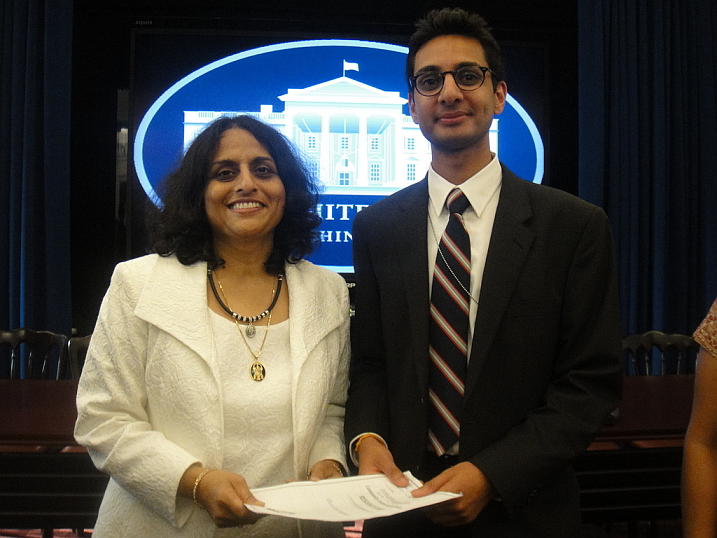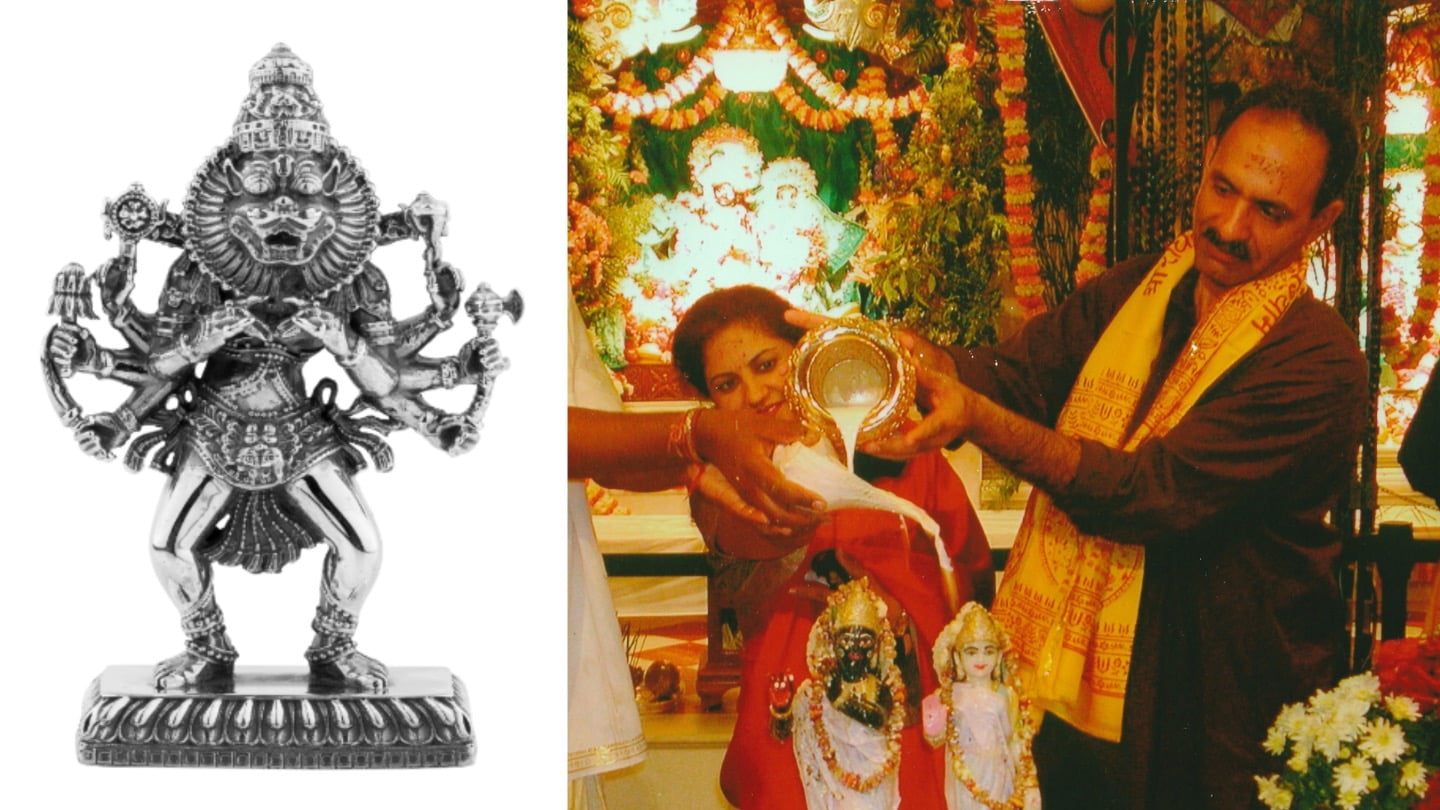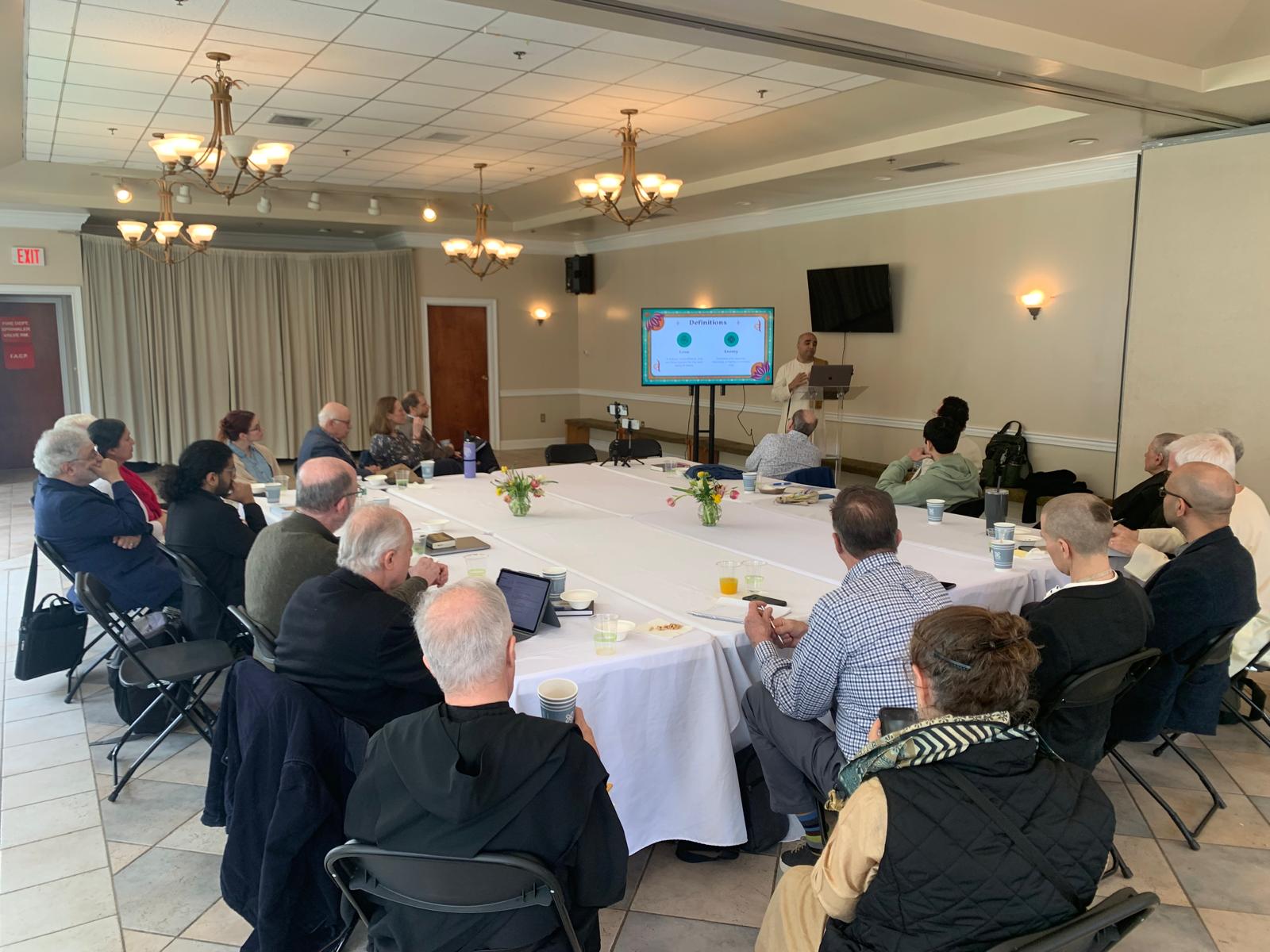ISKCON Camp Brings Prabhupada’s Message to Kumbha Mela
By Madhava Smullen | Feb 28, 2013

ISKCON devotees established a large camp at the Maha Kumbha Mela in Prayag (Allahabad) from January 14th to February 15th, bringing kirtan, prasadam and Srila Prabhupada’s books to the largest religious gathering in the world.
ISKCON devotees first attended the Ardha Kumbha Mela—which occurs every six years as opposed to every twelve like the Maha Kumbha Mela—in 1971, along with Srila Prabhupada.
At the gathering, which like this year’s was also in Allahabad, they set up one brightly colored pandal, three smaller residential tents for the men, women, and Srila Prabhupada, and one flimsy corrugated tin shack which served as a kitchen.
At first, the small group of forty Western disciples were bewildered by the strange and colorful sights and sounds. But Srila Prabhupada reminded them that spiritual life was neither exotic nor bewildering, but simple and practical, and that the essence of visiting a holy place was to find holy persons and hear from them.
Devotees stuck with this instruction during their first attendance of the Maha Kumbha Mela in 1977, and when they participated again in 1989 and 2001. And this year at the 2013 Kumbha Mela, their mission and their message was once again the same—to hear about Krishna from saintly persons and provide that opportunity to others.

The scale, however, was different.
By the first Shahi Snan (bathing day) of the Mela, ISKCON had established a large camp. Visitors entered through a huge arch reading “International Society for Krishna Consciousness,” and featuring giant pictures of Srila Prabhupada and his guru Srila Bhaktisiddhanta Sarasvati.
Through the entrance lay one Darbari, or management tent; 101 Swiss Cottage tents, fifty-four European Plan tents, six storage tents, twenty tin rooms, a pandal and kitchen both measuring ninety by sixty feet, and a 60’ x 74’ prasadam hall.
All this sat in the midst of a fifty-square-mile dried-up area of the Ganga riverbed, along with the rest of the astonishing makeshift city that arises during Kumbha Mela.

By the second and biggest bathing day of the Mela on February 10th—Mauni Amavasya, during which 30 million people took their bath at the sacred confluence of the Ganga, Yamuna and Saraswati—three thousand devotees had gathered in the ISKCON camp.
Camp manager Sanak-Sanatan Das, originally from Germany, has organized ISKCON’s participation in several other Kumbha Melas, both in Allahabad and in the other locations that it rotates to every three years—Nasik, Ujjain, and Haridwar. He fills us in on daily life at the Mela.
“Our schedule was a full one,” he says. “Every morning, we would attend Mangala arati at five o’clock—a little late due to the cold. At 7:30am we would attend Darshan arati, Guru Puja, and Bhagavatam class, before taking breakfast prasadam. Then, at 11:00am, the Padayatra India bullock cart, with its Nitai Gaura Sundara Deities and Srila Prabhupada murti, would travel ten kilometers all around the Mela with a big kirtan.”
As some devotees chanted, others would sell small books to Mela-goers for thirty rupees each, along with a free copy of Bhagavad-gita As It Is.
“Altogether, around 45,000 Bhagavad-gitas were distributed,’ says Sanak-Sanatan.

Meanwhile, back at the base, Western devotees preached Krishna consciousness to foreigners at the Mela from a tent containing electronic moving dioramas, depicting pastimes of Lord Krishna and His Avatars.
Alongside this outreach, the kitchen tent ran from 6:00am, serving free prasadam meals of rice, dahl, subji, chapatti, and sweets, all cooked in ghee, to 2,000 people every day.
“On the main bathing days, we served even more,” Sanak-Sanatan says. “On the first day, Makara Sankranti on January 14th, we served 5,000. And on Mauni Amavasya, we fed 10,000 people including the devotees.”

Each day then concluded with a 7:00pm arati and kirtan, followed by another chance to hear from saintly persons, as instructed by Srila Prabhupada. Speakers included Lokanath Swami, Radhanath Swami, Vedavyasa Priya Swami, Prabhodananda Sarasvati Swami, Radha Ramana Swami, Sarvabhauma Das, and Gopal Krishna Goswami.
Meanwhile during the main bathing days, devotees mingled with other holy men present, and on Mauni Amavasya participated in the day’s biggest procession with their Padayatra cart.
On February 15th, Vasant Panchami, the third main bathing day was observed, and the ISKCON camp was mostly dismantled, leaving only some local devotees who remained until February 25th.
Next, Sanak-Sanatan hopes to attend the Kumbha Mela in Nasik, from August to September 2016.
“Doing Vaishnava Seva [service to the devotees] at Kumbha Mela is very purifying,” he says.















